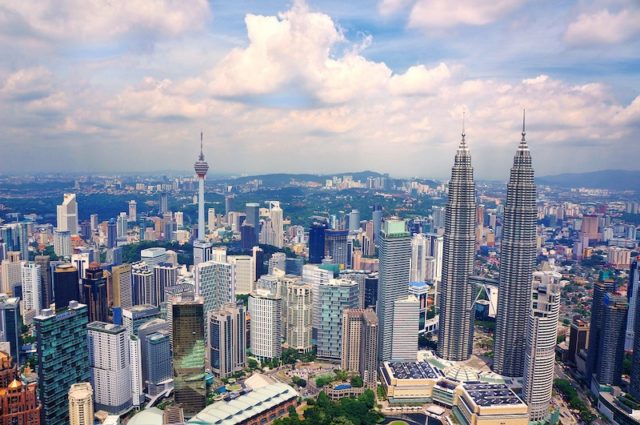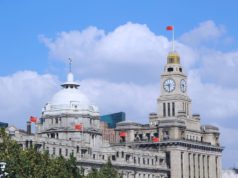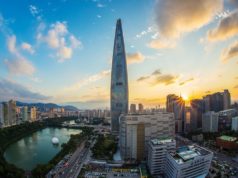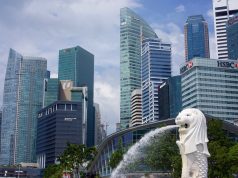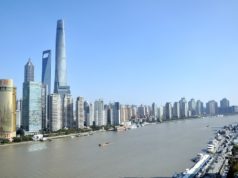2 Southeast Asia Countries Malaysia & Thailand to Apply to Join BRICS Comprising of 5 Countries Brazil, Russia, India, China & South Africa, 5 Countries Egypt, Ethiopia, Iran, Saudi Arabia & UAE Join as Members in 2024, BRICS Held First BRIC Summit in 2009 with 4 Countries Brazil, Russia, India & China, South Africa Joined in 2010 to Form BRICS
23rd June 2024 | Hong Kong
2 Southeast Asia countries Malaysia & Thailand are applying to join BRICS, an informal group currently comprising of 5 countries Brazil, Russia, India, China & South Africa. 5 countries Egypt, Ethiopia, Iran, Saudi Arabia & UAE join / are joining as members in 2024. The first BRIC Summit was held in 2009 with 4 countries Brazil, Russia, India & China. In 2010, South Africa joined form BRICS. Thailand is the 2nd largest economy in Southeast Asia with $495 billion GDP & 71 million population. Malaysia is the 5th largest economy in Southeast Asia with $407 billion GDP and 34 million population. The BRICS brings together 5 countries: Brazil, Russia, India, China and South Africa. – BRICS countries are influential members of leading international organisations and agencies, including the UN, the G20, the Non-Aligned Movement and the Group of 77. They are also members of various regional associations. The Russian Federation is a member of the Commonwealth of Independent States, the Collective Security Treaty Organisation and the Eurasian Economic Union. Russia and China are members of the Shanghai Cooperation Organisation and the Asia Pacific Economic Cooperation. Brazil is a member of the Union of South American Nations, MERCOSUR and the Community of Latin American and Caribbean States. The Republic of South Africa is a member of the African Union and the Southern African Development Community. India is a member of the South Asian Association for Regional Cooperation.
“ 2 Southeast Asia Countries Malaysia & Thailand to Apply to Join BRICS Comprising of 5 Countries Brazil, Russia, India, China & South Africa, 5 Countries Egypt, Ethiopia, Iran, Saudi Arabia & UAE Join as Members in 2024, BRICS Held First BRIC Summit in 2009 with 4 Countries Brazil, Russia, India & China, South Africa Joined in 2010 to Form BRICS “
Thailand to Apply to Join BRICS Comprising of 5 Countries Brazil, Russia, India, China & South Africa, Held First BRIC Summit in 2009 with 4 Countries Brazil, Russia, India & China with South Africa Joining in 2010 to Form BRICS, Thailand is 2nd Largest Economy in Southeast Asia with $495 Billion GDP & 71 Million Population

31st May 2024 – Thailand will be applying to join BRICS, an informal group currently comprising of 5 countries Brazil, Russia, India, China & South Africa. The first BRIC Summit was held in 2009 with 4 countries Brazil, Russia, India & China. In 2010, South Africa joined form BRICS. Thailand is the 2nd largest economy in Southeast Asia with $495 billion GDP & 71 million population. The BRICS brings together 5 countries: Brazil, Russia, India, China and South Africa. – BRICS countries are influential members of leading international organisations and agencies, including the UN, the G20, the Non-Aligned Movement and the Group of 77. They are also members of various regional associations. The Russian Federation is a member of the Commonwealth of Independent States, the Collective Security Treaty Organisation and the Eurasian Economic Union. Russia and China are members of the Shanghai Cooperation Organisation and the Asia Pacific Economic Cooperation. Brazil is a member of the Union of South American Nations, MERCOSUR and the Community of Latin American and Caribbean States. The Republic of South Africa is a member of the African Union and the Southern African Development Community. India is a member of the South Asian Association for Regional Cooperation.
Thailand to Apply to Join BRICS Comprising of 5 Countries Brazil, Russia, India, China & South Africa, Held First BRIC Summit in 2009 with 4 Countries Brazil, Russia, India & China with South Africa Joining in 2010 to Form BRICS, Thailand is 2nd Largest Economy in Southeast Asia with $495 Billion GDP & 71 Million Population

History of BRICS
BRICS is an informal group of states comprising the Federative Republic of Brazil, the Russian Federation, the Republic of India, the People’s Republic of China and the Republic of South Africa.
- It was the Russian side that initiated the creation of BRICS.
- On 20 September 2006, the first BRICS Ministerial Meeting was held at the proposal of Russian President Vladimir Putin on the margins of a UN General Assembly Session in New York. Foreign ministers of Russia, Brazil and China and the Indian Defence Minister took part in the meeting. They expressed their interest in expanding multilateral cooperation.
- On 16 May 2008, Yekaterinburg hosted Meeting of BRICS Foreign Ministers on the initiative of Russia. After the meeting, a Joint Communique was issued, reflecting common stances on topical global development issues.
- Another important step was taken on 9 July 2008, when Russian President Dmitry Medvedev met with Brazilian President Luiz Inacio Lula da Silva, Indian Prime Minister Manmohan Singh and Chinese President Hu Jintao on the margins of the G8 Summit in Toyako, Japan, on the Russian initiative.
- On the Russian initiative on 16 June 2009, Yekaterinburg hosted the first BRIC Summit. BRIC Leaders issued a joint statement after the Summit. The document set forth the goals of BRIC “to promote dialogue and cooperation among our countries in an incremental, proactive, pragmatic, open and transparent way. The dialogue and cooperation of the BRIC countries is conducive not only to serving common interests of emerging market economies and developing countries, but also to building a harmonious world of lasting peace and common prosperity.” The document outlined a common perception of ways to cope with the global financial and economic crisis.
- The growing economic might of BRICS countries, their significance as one of the main driving forces of global economic development, their substantial population and abundant natural resources form the foundation of their influence on the international scene.
- In 2013, BRICS accounted for about 27 percent of the global GDP (in terms of the purchasing power parity of their national currencies). The total BRICS population is 2.88 billion (42 percent of the entire global population), and the five countries cover 26 percent of the planet’s land.
- BRICS countries are influential members of leading international organisations and agencies, including the UN, the G20, the Non-Aligned Movement and the Group of 77. They are also members of various regional associations. The Russian Federation is a member of the Commonwealth of Independent States, the Collective Security Treaty Organisation and the Eurasian Economic Union. Russia and China are members of the Shanghai Cooperation Organisation and the Asia Pacific Economic Cooperation. Brazil is a member of the Union of South American Nations, MERCOSUR and the Community of Latin American and Caribbean States. The Republic of South Africa is a member of the African Union and the Southern African Development Community. India is a member of the South Asian Association for Regional Cooperation.
- Relations between BRICS partners are built on the UN Charter, generally recognised principles and norms of international law and the following principles, which were agreed by member countries at their 2011 Summit: openness, pragmatism, solidarity, non-bloc nature and neutrality with regard to third parties.
- BRICS work is based on action plans approved during annual summits since 2010.
- The system of cooperation formats between BRICS countries includes annual scheduled summits (2010 – Brazil; 2011 – China; 2012 – India; 2013 – South Africa; 2014 – Brazil; 2015 – Russia; 2016 – India), leaders’ meetings on the sidelines of G20 summits, meetings between high representatives responsible for national security, foreign ministers (on the sidelines of the UN General Assembly), ministers of finance and governors of central banks (on the sidelines of autumn and spring meetings of the International Monetary Fund and World Bank boards of governors and also on the sidelines of meetings of G20 ministers of finance), ministers of agriculture and agrarian development, BRICS sherpas and sous-sherpas, heads of statistical and anti-monopoly departments, senior officials for science and technological and innovation cooperation, meetings of working cooperation groups for agriculture and agrarian development, healthcare, information security, science and innovation, meetings of chairpersons of supreme (high) courts, heads of central election commissions, and representatives of municipal administrations and partner regions.
- Cooperation between national BRICS permanent missions at the UN Headquarters in New York, at international organisations in Geneva and Vienna and at UNESCO in Paris plays an important role in the mechanism of multilateral cooperation.
- Apart from joint events involving executive agencies and the judiciary branch, business organisations and research centres cooperate within the BRICS format.
- In 2009-2016 BRICS countries focused on the following joint priorities. They worked out a common stance on certain regional problems, including the Libyan, Syrian and Afghan problems and the Iranian nuclear programme. They also reached common agreement on financial and economic issues, including World Bank and IMF reforms, measures to ensure that sufficient resources can be mobilized to the IMF to strengthen its anti-crisis potential, the creation of BRICS Interbank Cooperation Mechanism which provides for Extending Credit Facility in Local Currency and the establishment of the BRICS Exchanges Alliance.
- BRICS is successfully expanding its external relations that were established at the Durban meeting between the five BRICS leaders, the leaders of the African Union and the leaders of eight leading African integration associations. On 16 July 2014, Brasilia hosted the second meeting in this format involving South American heads of state and government. This practice makes it possible to find important points of contact between BRICS and new leading centres of power that are emerging worldwide.
- The 6th BRICS Summit (Fortaleza and Brasilia, 15-16 July 2014) produced a highly important result. The sides signed the Agreement on the New Development Bank and the Treaty for the Establishment of a BRICS Contingent Reserve Arrangement. These institutions will possess a total of $200 billion.
- The Leaders also adopted a key decision on launching comprehensive talks regarding the BRICS Strategy for Economic Partnership and a draft BRICS Roadmap for BRICS Trade, Economic and Investment Cooperation.
- The sides also coordinated subsequent joint steps in topical areas of cooperation such as the resolution of conflicts, IMF reform, the fight against illicit drug trafficking, the use and development of information and communications technologies on the basis of international cooperation and generally recognised principles and norms of international law and the creation of favourable conditions for barrier-free trade.
- During the VII Summit (Ufa, 8-9 July 2015) BRICS leaders signed Ufa Declaration, Ufa Plan of Actions and Strategy for BRICS Economic Partnership that confirmed the strategic character of BRICS countries partnership and determined the directions of five countries long-term cooperation. Within the framework of the summit a Memorandum of Understanding to establish BRICS joint website board and the Agreement between the BRICS Governments of cultural cooperation were signed.
- BRICS leaders reached an agreement to open a number of new spheres of cooperation, initiated by the Russian Presidency – in the field of youth, migration, industry, energy, peacekeeping, environment, fight against infectious diseases etc.
- The Russian side also presented a Roadmap for trade-economic and investment cooperation between the BRICS countries up to 2020 year, which currently includes more than 60 proposals of cooperation from Russian companies.
- In 2016, India became the head of the Association. The culmination of its presidency was the eighth summit of BRICS, which was held in the Indian state of Goa on 15-16 October. Its motto was “The Formation of popular, inclusive and collective decisions”. The leaders of five countries signed the Declaration of Goa, which expressed a coherent position on issues related to the development of the Association and critical issues.
- At the summit in Goa were discussed the issues of energy, trade, banking cooperation, agriculture, space utilization and other common spaces, health, education, development of humanitarian contacts and tourism, the fight against poverty and social inequality. In addition to the Declaration was signed a number of sectoral agreements.
- The BRICS presidency in 2017 were transferred to China, in 2018 – to South Africa, in 2019 – to Brazil and in 2020 – to Russia.
Sign Up / Register
Caproasia Users
- Manage $20 million to $3 billion of assets
- Invest $3 million to $300 million
- Advise institutions, billionaires, UHNWs & HNWs
Caproasia Platforms | 11,000 Investors & Advisors
- Caproasia.com
- Caproasia Access
- Caproasia Events
- The Financial Centre | Find Services
- Membership
- Family Office Circle
- Professional Investor Circle
- Investor Relations Network
Monthly Roundtable & Networking
Family Office Programs
The 2025 Investment Day
- March - Hong Kong
- March - Singapore
- July - Hong Kong
- July - Singapore
- Sept- Hong Kong
- Sept - Singapore
- Oct- Hong Kong
- Nov - Singapore
- Visit: The Investment Day | Register: Click here
Caproasia Summits
- The Institutional Investor Summit
- The Investment / Alternatives Summit
- The Private Wealth Summit
- The Family Office Summit
- The CEO & Entrepreneur Summit
- The Capital Markets Summit
- The ESG / Sustainable Investment Summit











